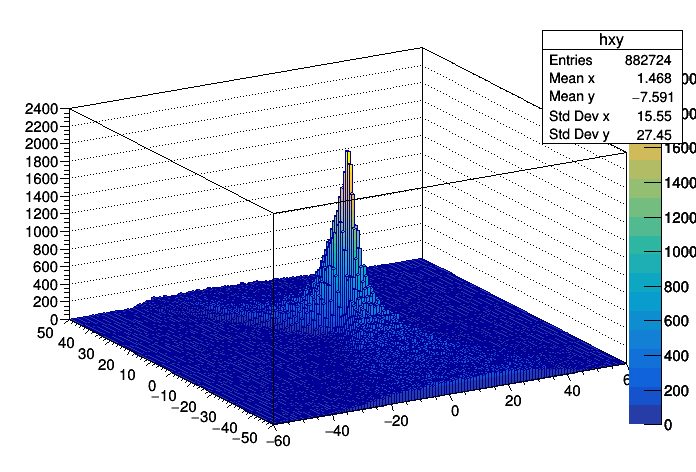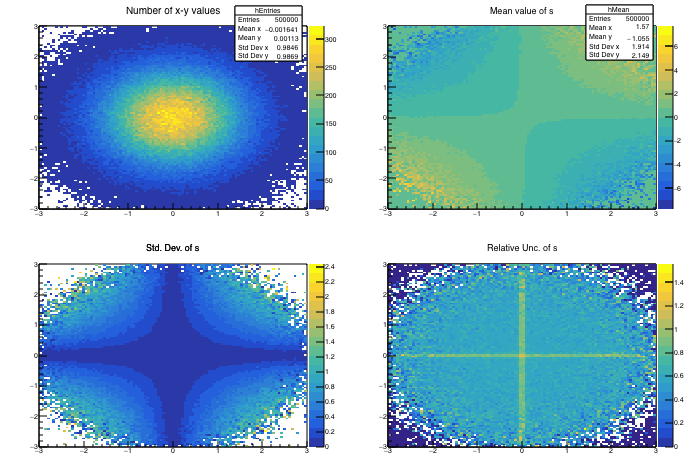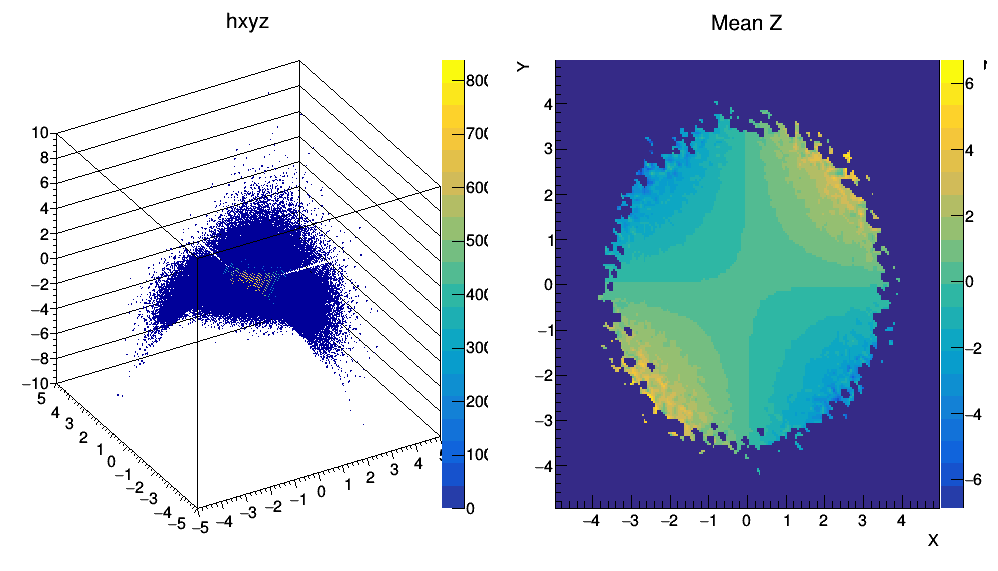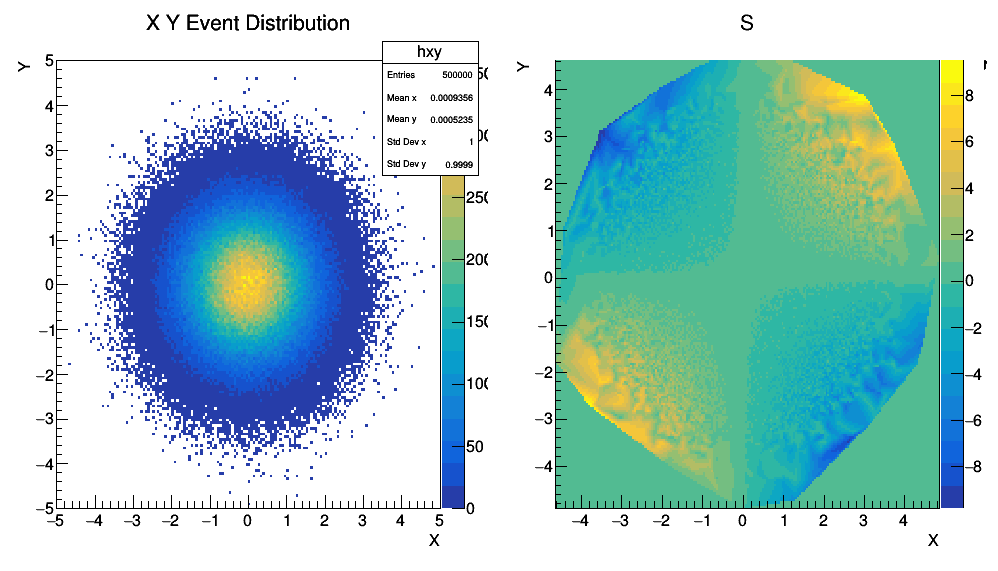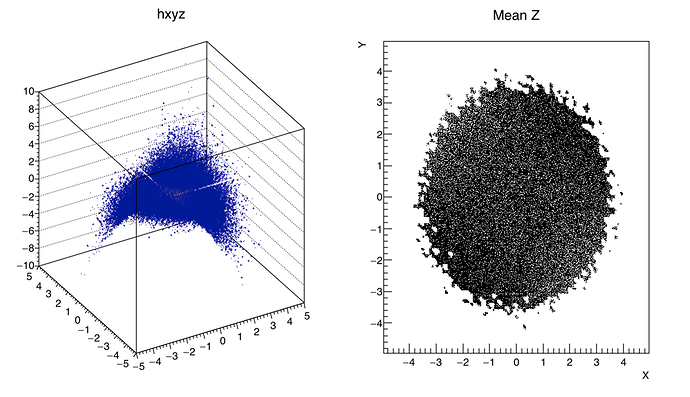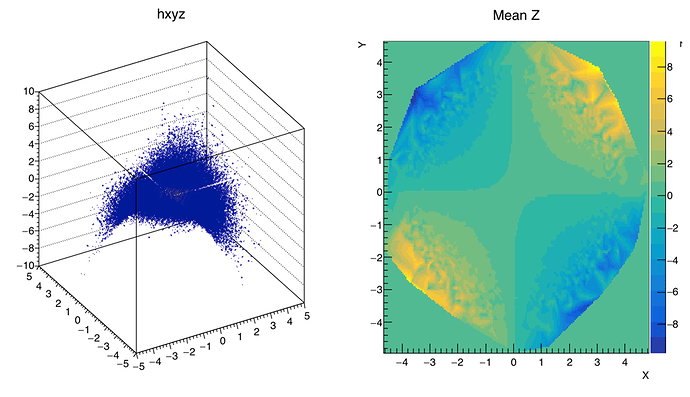I came across with a problem and I have been looking for options but after a while I haven’t been able to find a straightforward way to do it. I’m sure someone else have faced it before and ROOT may have already implemented the proper methods to do it.
I have a data set composed by three variables. Each event has an associated X, Y position, and S. I need to make a 2D (or 3D) representation in a histogram in which the X and Y axis are bins of the variables X and Y and the average of S for that particular bin is represented using a Rainbow color map in linear scale. It’s like having a TH3D histogram suppressing information about the number of events in each bin, or (even better) to include the number of events in the bin using the Z axis (similar to using the LEGO2Z option but the color scale representing <S>).
I saw this previous post Project TH3 into TH2-COLZ-like plot but I’m not sure on how they use the Draw method there.
Please let me know if you can point any information out to solve this problem. Any help would be appreciated,
FWIW I named this post as close as possible as https://root.cern.ch/3-variables-visualization-techniques it would be useful if we can include some links to examples like https://root.cern.ch/doc/v610/classTHistPainter.html#HP25 there
All the best,
Andres
